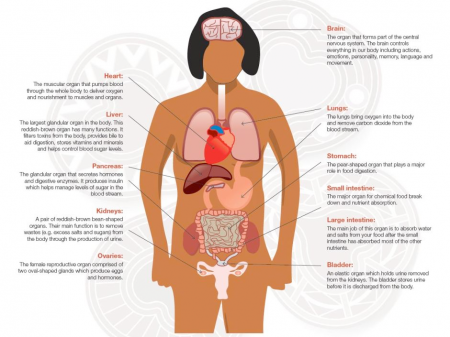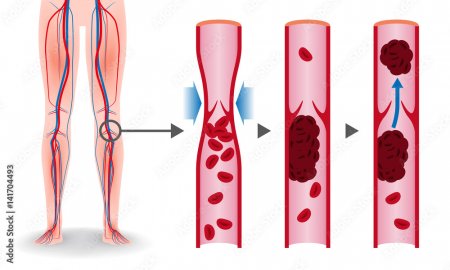Anatomy as a science
- Category: Anatomy
- Views: 92126
Name of Science "anatomy" (humans, animals, plants) is derived from the Greek word "anatemno" - cut, dismember, dissect, and its essence is to study the structure organisms and organisms organs by method autopsy of tissues. This science refers to the biological sciences, united under the term "morphology" (from the Greek. Tohriho - form, logos - teaching).
Morphology (a term coined German poet and scientist Goethe in 1817) is not limited to stating the information on the form and structure of the various parts of the body (normal, abnormal, ugly, etc.) obtained at different teaching levels (macroscopic, microscopic, cellular, molecular etc.). It also clarifies the organs evolution and the whole organism under the influence of various factors (functional, climatic -heohrafichnyh etc.). It must be admitted that the priority of anatomy was very large in the historical birth of many morphological sciences. In the late XIX - early XX centuries the morphology developed its section - evolutionary morphology which aims to study organisms and some organs in ontogeny and phylogeny.
Human anatomy as an independent science for a long time (until the XIX century) remained as descriptive in most cases (arose as descriptive anatomy), that it was limited to only describing, naming and classification of organs and systems. In the Renaissance, and all subsequent days up to now world science was enriched by discoveries that explain not only certain phenomena but also reasons of their occurrence and development. In search of truth, scientists were increasingly go beyond the individual sciences. In other words, there was a process of intensive interpenetration of different disciplines.
Rheumatoid arthritis
- Category: Immunology
- Views: 1061

Rheumatoid arthritis (RA) is a chronic inflammatory disorder that affects the joints, causing pain, swelling, stiffness, and loss of function. It is an autoimmune disease, meaning that the body's immune system attacks its own tissues, in this case, the synovium, which lines the joints. Over time, this can lead to joint damage and deformity, as well as other complications throughout the body.
Pulmonary embolism
- Category: Cardiology
- Views: 761
Pulmonary embolism is a serious and potentially life-threatening medical condition that occurs when a blood clot travels from another part of the body and lodges in the pulmonary artery, blocking blood flow to the lungs. Pulmonary embolism can cause a range of symptoms, including shortness of breath, chest pain, coughing, and fatigue. If left untreated, it can lead to severe complications, including heart failure and even death.
Deep vein thrombosis (DVT)
- Category: Cardiology
- Views: 1025
Deep vein thrombosis (DVT) is a serious medical condition that occurs when a blood clot forms in one of the deep veins of the body, most commonly in the leg. DVT can be life-threatening if the clot breaks off and travels to the lungs, causing a pulmonary embolism.
Peripheral artery disease (PAD)
- Category: Cardiology
- Views: 739
Peripheral artery disease (PAD) is a condition that occurs when the arteries that supply blood to the legs, arms, stomach, and kidneys become narrowed or blocked. This condition is also known as peripheral vascular disease and can be caused by a buildup of plaque, a fatty material that accumulates inside the walls of the arteries.
Hypertension
- Category: Cardiology
- Views: 1031
Hypertension is a common condition that affects millions of people worldwide. It is a condition in which the force of the blood against the walls of the arteries is consistently too high. Blood pressure is determined by the amount of blood pumped by the heart and the resistance of the arteries to the blood flow. When the heart pumps, blood flows through the arteries and exerts pressure against their walls. This pressure is called systolic blood pressure. When the heart is at rest, the pressure in the arteries drops to a lower level, called diastolic blood pressure.
Aortic aneurysm
- Category: Cardiology
- Views: 655
Aortic aneurysm is a serious medical condition that occurs when a section of the aorta, the largest artery in the body, bulges or balloons out. If left untreated, an aortic aneurysm can burst or rupture, causing life-threatening internal bleeding.
Heart valve disease
- Category: Cardiology
- Views: 867
Heart valve disease is a condition that occurs when one or more of the heart's valves do not function properly, leading to reduced blood flow or the backward flow of blood. There are four valves in the heart: the mitral valve, tricuspid valve, aortic valve, and pulmonary valve.
Atherosclerosis
- Category: Cardiology
- Views: 736
Atherosclerosis is a chronic disease that affects the arteries, which are the blood vessels that carry oxygen-rich blood from the heart to the rest of the body. It occurs when fatty deposits, cholesterol, and other substances build up inside the arteries, causing them to become narrowed and less flexible.
Heart failure
- Category: Cardiology
- Views: 728
Heart failure is a medical condition that occurs when the heart is unable to pump enough blood to meet the body's needs. This can be caused by a variety of factors, including damage to the heart muscle, high blood pressure, coronary artery disease, and other underlying health conditions.








